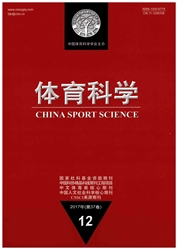

 中文摘要:
中文摘要:
采用文献资料调研、实地调查、专家访谈等方法,对大型体育场(馆)空间布局及其优化问题进行了探讨。阐述了我国体育场(馆)总体上呈现出以经济条件、城市形态、道路、学校、人口分布为指向的布局特征;体育场(馆)存在总体布局缺乏均衡性布局结构不合理,部分体育场(馆)布局过于中心化,与城市公共空间契合不足,布局过于郊区化以及区域条件不相适应等布局失当问题。导致体育场(馆)布局失当的主要原因是:市场经济规律遵循不够,前期调查与论证缺乏,布局决策机制缺位,与城市区域建设的时序颠倒,体育场(馆)用地标准落实不到位和布局指导内容可操作性不强等。基于以上研究结果,结合国外有关体育场(馆)布局的实践经验,提出今后我国政府应该从以下几个方面优化体育场(馆)布局:以静态与动态相结合的方式研究体育场(馆)布局问题,着重分析与明确体育场(馆)布局目标,遵循城市总体规划内容与要求,科学选择与构建体育场(馆)的布局模式,提高体育场(馆)布局决策的科学性,加强与转变政府在体育场(馆)布局中的职能作用等。
 英文摘要:
英文摘要:
By using the research methods of literature study, investigation, expert interviews etc. , this paper discusses the spatial distribution of grand stadium in China. Firstly, it narrates that generally the layout characteristics of Chinese stadium are economic condition, urban morphology, road, school, and population distribution oriented. Secondly, it shows the problems of the spatial distribution, such as the disequilibrium of overall layout; unreasonable layout structure ;centralized arrangement of some stadiums;insufficient connection with urban space ; suburbanized locations ; and unmatched regional conditions. This paper further illustrates the main reasons for the above mentioned problems ; disobeying the law of market economy;inadequate pre-survey and argumentatiom lacking of layout decision mechanism; reversing the construction sequence; poor implementation of the standards of stadium land use; unpractical layout guidance. Finally, based on the result of this paper , by drawing experience from foreign countries, the author puts forward some suggestions to optimize the spatial distribution of grand stadium in China, for example, studying the layout from both static and dynamic aspects; focusing on analyzing and specifying the layout direction; following up with content and requirement of the city plan; choosing and constructing the right layout mode; improving quality of layout decision;transferring and fully playing the role of government in the process.
 同期刊论文项目
同期刊论文项目
 同项目期刊论文
同项目期刊论文
 期刊信息
期刊信息
